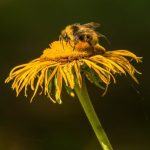Gardening can be a transformative and educational experience for Junior Girl Scouts, providing them with valuable life skills and a deeper connection to nature. In this article, we will explore a variety of engaging activities and ideas to help Junior Girl Scouts earn their gardening badge. From selecting the right plants to understanding soil composition and composting, these projects are designed to foster a love for gardening while teaching important lessons about sustainability and responsibility.
For Junior Girl Scouts who are eager to delve into the world of gardening, this guide offers a pathway filled with exciting opportunities to learn and grow. By planting seeds of curiosity and nurturing them through hands-on activities, girls can develop a sense of pride in creating something beautiful from scratch.
Whether it’s designing garden plans or implementing sustainable practices, each step taken towards earning the Junior Girl Scout Gardening Badge is a step towards personal growth and environmental stewardship.
Through this journey of exploration and discovery, Junior Girl Scouts can not only cultivate thriving gardens but also cultivate essential life skills like teamwork, problem-solving, and perseverance. By following our suggested activities and tips, troop leaders can guide their girls towards earning their gardening badge with confidence and creativity.
So let’s roll up our sleeves, get our hands dirty, and embark on a green adventure that will leave a lasting impact on both the girls and the environment they’ll nurture.
Choosing the Right Plants for a Junior Girl Scout Garden
When it comes to choosing the right plants for a Junior Girl Scout garden, there are several factors to consider. First and foremost, it’s important to select plants that are easy to grow and maintain, especially for beginners. Opt for flowers, herbs, or vegetables that are resilient and require minimal care, so the young scouts can have a successful gardening experience.
Benefits of Growing Vegetables
Growing vegetables can be an incredibly rewarding experience for Junior Girl Scouts. Not only do they get to see the fruits of their labor as they harvest fresh produce, but they also learn valuable lessons about where food comes from and how it grows. Consider planting easy-to-grow vegetables like cherry tomatoes, lettuce, or radishes so the scouts can witness the entire growth cycle from seed to harvest.
Choosing Native Plants
Another important aspect to consider when selecting plants is choosing native species. Native plants are well-suited to the local environment, making them more resilient and requiring less maintenance. By planting native species in their garden, Junior Girl Scouts can attract pollinators like bees and butterflies, contributing to ecosystem health and biodiversity. Encourage the scouts to research which native plants thrive in their region and incorporate them into their garden plan for a successful and sustainable gardening project.
Teaching Junior Girl Scouts About Soil and Composting
When it comes to teaching Junior Girl Scouts about gardening, understanding the importance of soil health and composting is essential. Soil provides the foundation for healthy plant growth, and introducing girls to the different types of soil and their specific characteristics can help them make informed decisions when selecting plants for their garden.
Composting, on the other hand, is a valuable lesson in sustainability and waste reduction. By learning how organic materials break down into nutrient-rich compost, Junior Girl Scouts can actively participate in reducing waste while enriching their garden’s soil.
The Basics of Soil: Exploring Different Types
Introducing Junior Girl Scouts to the various types of soil, such as sandy, clay, loamy, or silt, can be an engaging educational activity. They can learn about each type’s characteristics, including water retention capabilities and nutrient levels. Encouraging girls to observe and feel different soils with their hands can make the learning experience interactive and memorable. Additionally, discussing how different plants thrive in specific types of soil can help them choose suitable vegetation for their garden.
Exploring Composting: Turning Waste Into Nutrient-Rich Soil
Teaching Junior Girl Scouts about composting offers a hands-on lesson in recycling organic waste effectively. Girls can learn which items are suitable for composting, such as fruit peels, vegetable scraps, coffee grounds, and eggshells.
Demonstrating how these materials decompose over time into nutrient-rich humus that benefits plants can spark their interest in sustainable practices. Setting up a small compost bin or pile within the troop’s gardening area allows girls to actively participate in managing the composting process and witness the transformation from waste to valuable soil amendment firsthand.
Fun and Educational Gardening Activities for Junior Girl Scouts
Gardening can be a fun and educational activity for Junior Girl Scouts, providing them with valuable skills and knowledge about the environment. Here are some engaging gardening activities that can help Junior Girl Scouts earn their gardening badge:
- Planting Seeds: Start by teaching Junior Girl Scouts how to plant different types of seeds, from flowers to vegetables. This hands-on activity allows them to learn about the germination process and witness the growth of their plants over time.
- Garden Scavenger Hunt: Organize a scavenger hunt in the garden where Junior Girl Scouts can search for specific plants, insects, or garden tools. This not only keeps them active but also helps them become more observant of their surroundings.
- DIY Plant Markers: Encourage Junior Girl Scouts to get creative by making their own plant markers using materials like popsicle sticks, rocks, or recycled items. This activity not only personalizes their garden but also reinforces plant identification skills.
In addition to these activities, it’s important to incorporate lessons on topics like pollination, plant life cycles, and watering techniques. By making gardening both educational and enjoyable, Junior Girl Scouts can develop a deeper appreciation for nature and sustainable practices. Through these activities, they can work towards earning their junior girl scout gardening badge ideas while having a great time outdoors.
Creating a Garden Plan for the Junior Girl Scout Troop
Once the plants have been chosen, it’s time to create a planting layout for the garden. This is a great opportunity to teach Junior Girl Scouts about spacing between plants, companion planting, and creating a visually appealing design.
Consider incorporating raised beds or container gardening if space is limited, as these methods can be more manageable for young gardeners. Additionally, make sure to include plants that attract pollinators like bees and butterflies to educate the scouts about the importance of biodiversity in a garden ecosystem.
In order to ensure the success of the garden plan, divide tasks among the Junior Girl Scout troop members based on their interests and abilities. Assign responsibilities such as watering schedules, weeding duties, and monitoring plant growth.
Encourage regular check-ins and reflections on the progress of the garden so that all members feel involved and invested in its upkeep. By working together towards a common goal, Junior Girl Scouts will not only earn their gardening badge but also develop important life skills that will benefit them beyond this project.
| Junior Girl Scout Gardening Ideas | Importance |
|---|---|
| Involving scouts in plant selection | Promotes ownership and enthusiasm |
| Create planting layout | Teaches important gardening concepts |
| Assigning tasks based on abilities | Promotes teamwork and responsibility |
Incorporating Sustainability Practices Into Gardening for Junior Girl Scouts
Another important element of sustainable gardening is water conservation. Show Junior Girl Scouts how to use watering techniques that minimize water waste, such as drip irrigation systems or collecting rainwater. Encourage them to be mindful of their water usage and emphasize the impact of conserving this precious resource. Additionally, discuss the benefits of planting native species in their garden, as these plants are well-adapted to the local climate and require less maintenance, water, and pesticides.
Furthermore, sustainability practices can extend beyond just the act of gardening itself. Encourage Junior Girl Scouts to reuse materials for DIY garden projects, such as creating plant labels from recycled materials or using old containers as pots. Educate them on the importance of reducing plastic waste in the garden by opting for biodegradable materials whenever possible. By instilling these sustainable habits early on, Junior Girl Scouts can cultivate a lifelong appreciation for eco-friendly practices in gardening and beyond.
| Sustainability Practices | Benefits |
|---|---|
| Composting | Enriches soil with nutrients and reduces waste |
| Water conservation | Minimizes water waste and educates on resource conservation |
| Native species planting | Requires less maintenance, water, and pesticides while supporting local ecosystems |
Tips for Earning the Junior Girl Scout Gardening Badge
As Junior Girl Scouts embark on their gardening journey, earning the Gardening Badge can be a rewarding accomplishment that showcases their dedication to learning about plants and sustainable practices. To successfully earn this badge, scouts can engage in a variety of activities that not only deepen their understanding of gardening but also allow them to contribute positively to the environment.
One essential aspect of earning the Junior Girl Scout Gardening Badge is to participate in hands-on gardening activities. From planting seeds to caring for plants and harvesting produce, scouts can gain valuable skills and knowledge through practical experience. Encouraging scouts to actively engage in gardening tasks will not only foster a sense of responsibility but also instill a love for nature and the environment.
Another key component of earning the badge is learning about different types of plants, their growth requirements, and how they contribute to the ecosystem. Junior Girl Scouts can explore various plant species, from flowers to vegetables, and understand the importance of native plants in promoting biodiversity. By educating themselves about plant diversity, scouts can make informed decisions when planning and maintaining their garden, ensuring its sustainability for years to come.
Showcase Successful Junior Girl Scout Gardening Projects With Before and After Photos
Gardening is more than just a hobby – it can be a powerful tool for teaching young girls essential life skills and fostering a love for the environment. Junior Girl Scouts can greatly benefit from engaging in gardening activities, not only for their personal growth but also for the community and nature around them. By getting involved in gardening projects, Junior Girl Scouts can learn about responsibility, teamwork, and the importance of sustainable practices.
One of the key aspects of earning the Junior Girl Scout Gardening Badge is showcasing successful gardening projects with before and after photos. This serves as a visual representation of their hard work and dedication to tending to their gardens. The transformation from planting seeds to lush greenery or blooming flowers can be incredibly rewarding for these young scouts.
By documenting their progress through photos, Junior Girl Scouts can reflect on the growth they have experienced alongside their plants. It also allows them to share their achievements with others, inspiring friends and family members to get involved in gardening as well.
These photos serve as a reminder of the impact they have made on their environment and how their efforts have contributed to a healthier, more sustainable community. So next time you are planning your next project think about this section and ideas you came up with here as perfect guide.
Frequently Asked Questions
Is There a Girl Scout Badge for Gardening?
Yes, there is a Girl Scout badge for gardening called the “Outdoor Art Explorer” badge. This badge teaches Girl Scouts about gardening and the importance of taking care of the environment around them.
Is There a Scout Badge for Gardening?
Yes, there is also a scout badge for gardening in the Boy Scouts program. The Gardening merit badge helps scouts learn all about planting, growing, and maintaining a garden while fostering an appreciation for nature.
Is There a Cooking Badge in Girl Scouts?
Yes, there is a cooking badge in Girl Scouts known as the “Cooking Badge”. This badge teaches girls how to cook various dishes, practice kitchen safety, and understand the importance of nutrition in their diets.

Welcome to my gardening blog! I am passionate about plants and enjoy sharing my knowledge and experiences with others. In this blog, I will write about everything related to gardening, from tips on how to get started to updates on my own garden projects.





